The 9 best laptops of the 2010s
Here are the best laptops from the past decade.
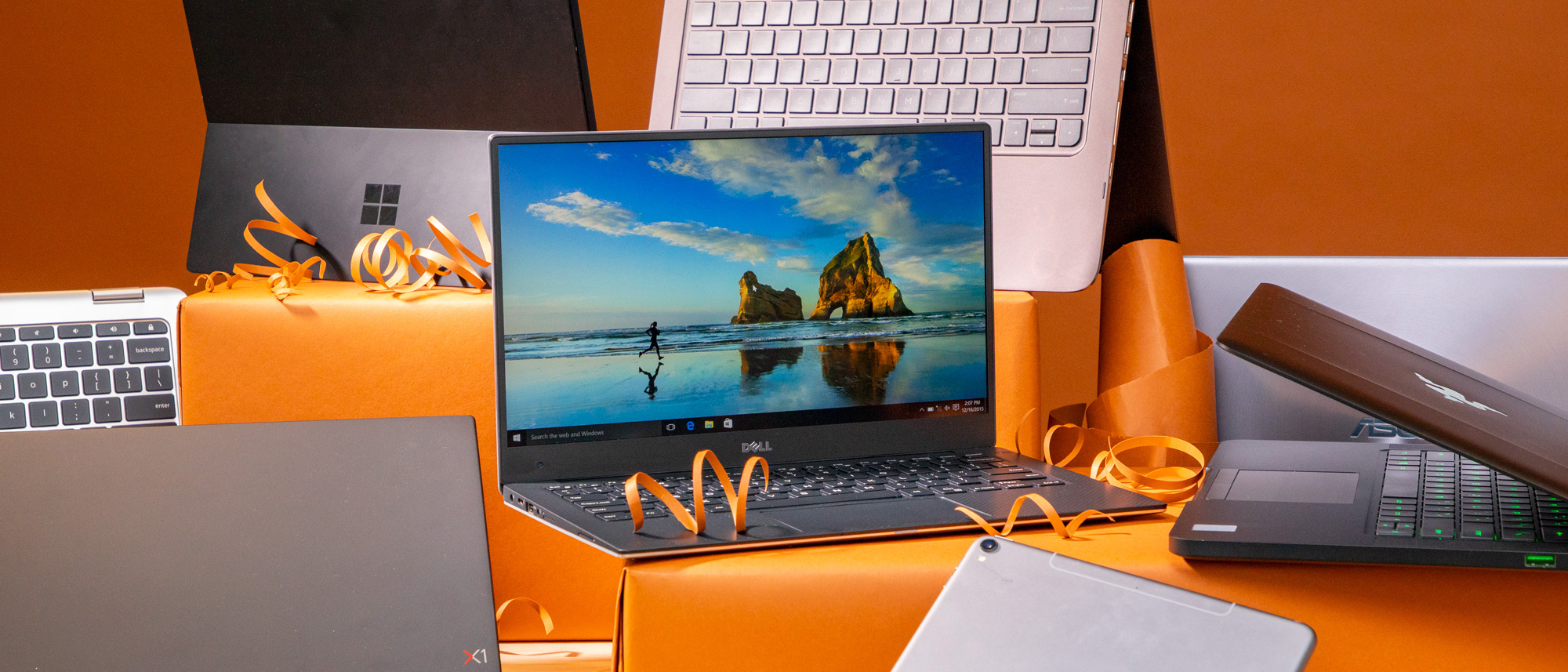
Disclaimer: This article was written to celebrate some of the greatest laptops released between 2010 and 2020. If you want to know what's the best pick right now, check out our fully up-to-date guide to the best laptops based on Laptop Mag's own reviews.
The original article follows below.
Where did the time go? It seems like only a minute ago we were ringing in 2010, and now we’re at the cusp of saying goodbye to 2019 and hello to the roaring 2020s. But before you start whipping out the flapper dresses, jazz, and Gin Rickeys, let’s take a moment to reflect on the laptops that defined the decade.
From the beautifully balanced Dell XPS 13, to the consistently reliable Lenovo ThinkPad X1 Carbon, to the delightfully slim Asus Zenbook UX331UN, here are the 9 best laptops of the decade...plus one tablet.
Best overall: Dell XPS 13
Why you can trust Laptop Mag
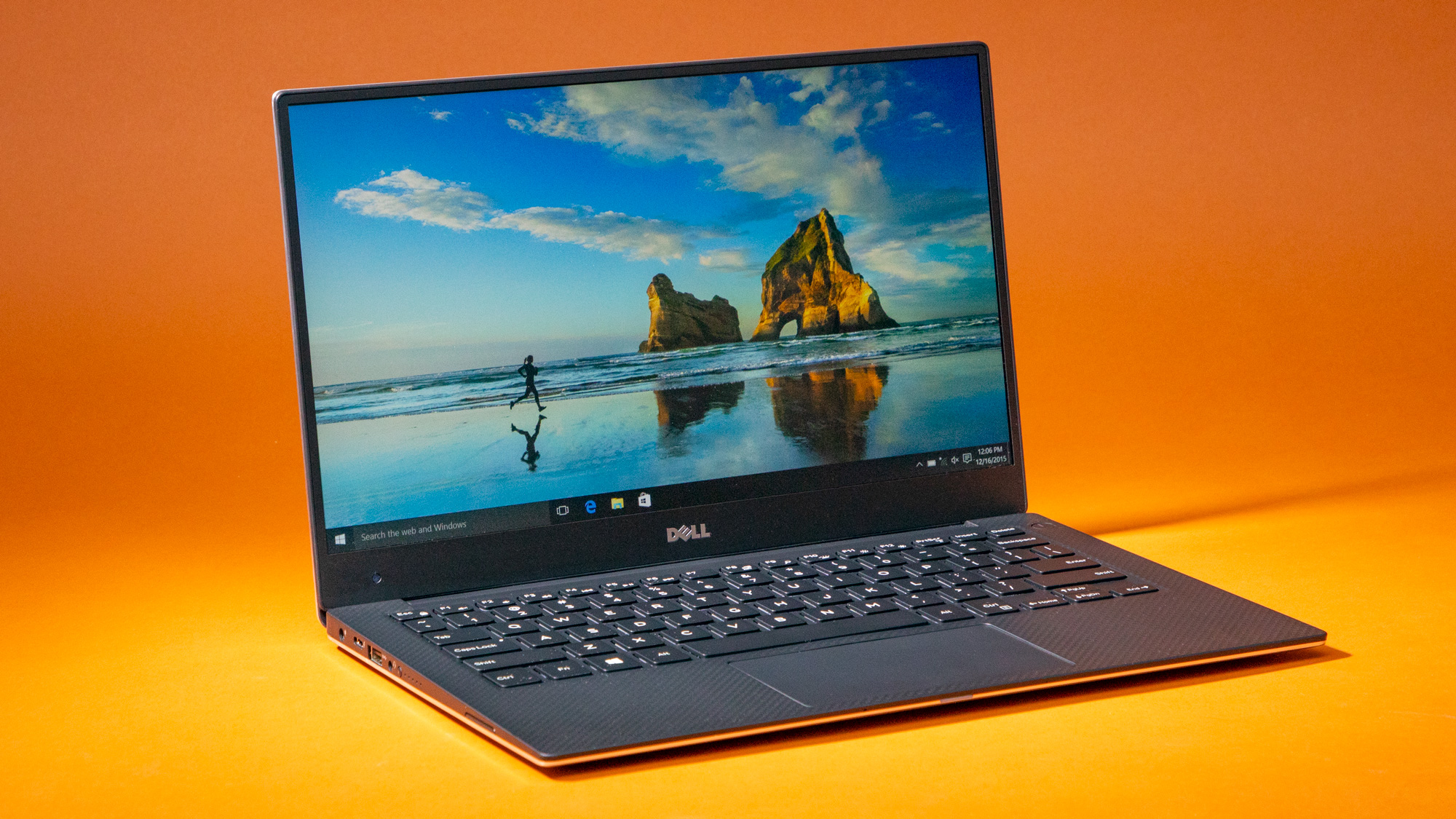
Anodized aluminum, glass weave, and nearly zero bezels. Those are the ingredients of a decade-defining laptop. Since 2015, the Dell XPS 13, as well as the XPS 13 2-in-1 and XPS 15, have sat at the top of many a tech publication’s best list, essentially beating a certain Cupertino juggernaut at its own game. This is the story of how Dell created its own lane and changed how everyone (including Apple) made laptops as a result.
It all started at CES 2015, when Dell unveiled the latest model of the XPS 13, the flagship notebook in the company’s premium line. At first glance, the laptop looked like previous entries until you opened it up. And then you saw those bezels, or lack thereof. Teaming with Sharp, the XPS team had all but eliminated those unsightly thick bezels, replacing them with the first InfinityEdge display. The smaller bezels allowed Dell to significantly shrink the XPS 13’s profile, capturing the title of the world’s smallest 13-inch. It was all a part of an aggressive plan put in place by Donnie Oilphant, senior director of product marketing for XPS.
The original rollout plan for InfinityEdge was to take place over 10 years and three phases, the first of which would have significantly reduced the side bezels, leaving the top and bottom bezels intact. Instead, the team jumped to phase two. That gave us the three-sided InfinityEdge but also introduced the bottom bezel-mounted nosecam. But the company restored the camera to its rightful place two years later, creating the world’s smallest webcam.
Since then, the XPS team has continued to innovate the formula, shaving off a millimeter here and developing a new cooling system there. After learning women customers wanted another color scheme, the company created its proprietary glass fiber weave to open up more color palettes, including the lovely rose gold variant. And as we close out this decade, Dell and the XPS team is looking forward with the motto of “chasing perfect.”
“[E]verybody knows perfect doesn't exist. But if you don't chase perfect, you’re obviously never going to get there,” says Oliphant. “And so we strive every day...the area that we have probably the most opportunity to improve on and to continue to make huge strides is going to be in in the customer experience all the things, services, you know, ecosystems, all the things that we wrapped around that beautiful piece of jewelry.”
It’s a lofty goal, one that Dell doggedly pursues as it looks towards the future of the brand. But if it can’t achieve perfect, balance is the next best thing as Dell has consistently balanced value, quality, performance and endurance in one stellar product.
“That's the ethos of what we do it is all about trying to drive the most balanced definition of each product within each category that we participate in. And that's what we think gives us the best platform within those categories,” Oliphant stated. — Sherri L. Smith
Best 2-in-1: Microsoft Surface Pro 6

The Surface Pro 6 fixed the one thing holding Microsoft back from offering a device that fulfills its vision of a more mobile Windows 10 experience. The original Surface Pro introduced us to a new type of detachable Windows 10 device, but it had some serious shortcomings.
Battery life was an issue for several years running and damaged the detachable’s promise of portability. It wasn't until the Surface Pro 6 that we started feeling comfortable using it away from an outlet.
"Performance, including battery life, is the result of hardware and software coming together to deliver the best experience for our customers, "Timothy Golik, senior director of product management at Microsoft told Laptop Mag. "In addition to the choice of physical components like custom batteries and low-power components, we work closely with our silicon partners and software teams across Microsoft to optimize how the software interacts with the hardware.
Golik continued, "Paying attention to these small details - measured down to the milliwatt level - is how we deliver the best balance of power, portability and battery life."
With longer battery life, the Surface Pro 6 could finally take advantage of its flexible, ultraportable chassis and excellent keyboard and stylus accessories. Just as importantly, that extended endurance didn't compromise on the Surface Pro 6's bright and colorful 12.3-inch display and speedy performance.
A new stealthy matte-black color scheme added even more appeal to an already complete package, "With the all-new matte black color we saw an opportunity to offer a new option that adheres to the professional aspect of the product line while providing timeless style and performance. Surface pioneered and continues to lead the detachable laptop market," Golik said.
The Surface Pro 6 remains the best detachable 2-in-1, even after the release of the Surface Pro 7. — Phillip Tracy
Best business laptop: Lenovo ThinkPad X1 Carbon
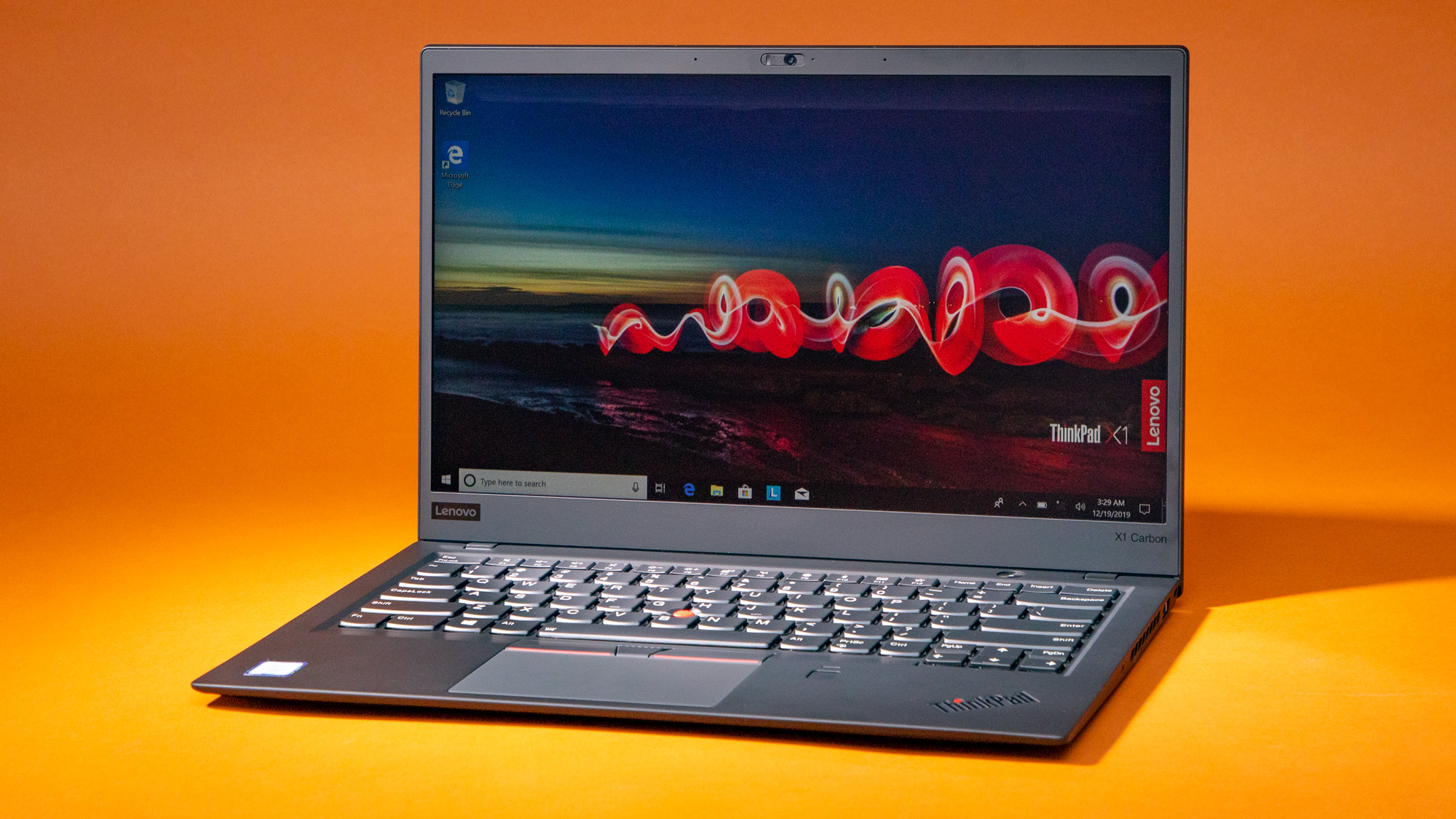
Consistently crowned the best business laptop you can buy, Lenovo's ThinkPad X1 Carbon series proves that you don't need to rewrite the formula to stay relevant.
Year-over-year refinements to this slim business notebook came together in 2017 when Lenovo released a 6th Gen model that would become a member of a rare breed of 5-star rated products. This near-perfect laptop retained the featherweight, yet durable carbon fiber chassis of its predecessors while packing faster performance, a stunning Dolby Vision HDR display and tons of security features for business professionals.
Contrary to popular belief, the 6th Gen ThinkPad X1 Carbon wasn't only made for enterprise users. The few tweaks Lenovo made to this specific model were crafted to appeal to a wider audience.
"When we launched this product, a lot of the inspiration was take the core components of the ThinkPad DNA, the quality, the maniacal focus on the best keyboard in the industry, the portability and the weight, ports and features, then dial-up more of the consumer-focused attributes," Tom Butler, executive director of worldwide commercial portfolio and product management at Lenovo, told Laptop Mag.
Those changes include blacking out the ThinkPad logo and opting for a slightly different color variant. The X1 logo was also added to the front of the laptop in what Butler calls its "M3 badge if you're a car guy."
This was a new direction for us in terms of looking closely at the aesthetic and the experience you have as a consumer as well as a business user. So we continue to drive that. If you look at this year's X1 lines, we went even further; We introduced the first CNC aluminum Yoga chassis, we introduced a carbon-fiber woven cover and added4G support.
As much as we love the 7th Gen successor, the 6th Gen ThinkPad X1 Carbon was the first time a business laptop offered the complete package for enterprise and everyday consumers alike. — Phillip Tracy
Best gaming laptop: Razer Blade 14
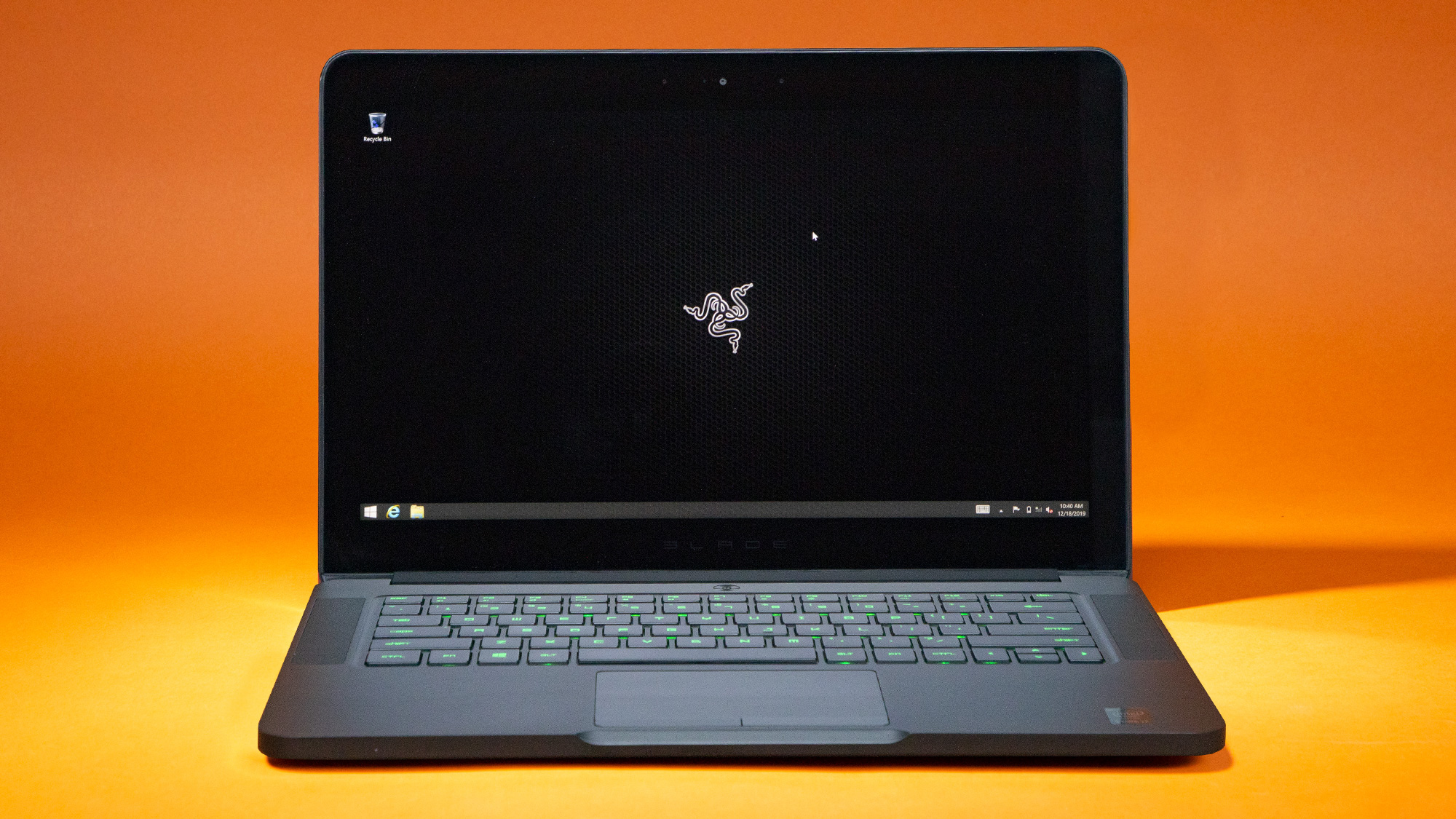
Back in 2012, Razer did something revolutionary. The company, at the time known primarily for gaming peripherals, had just debuted its first gaming laptop, the Razer Blade. Thumbing its nose at the conventions of the time, Razer’s first notebook was only 0.88-inches thick when at the time a slimmest you could expect a gaming laptop to be was 1.5 inches. It was a vision in onyx CNC aluminum that left an indelible mark on the mobile PC gaming space.
“Gaming is deeply ingrained in the culture at Razer and, the staff here really lives by the kind of for gamers by gamers lifestyle, and we continue to keep that as a focus,” said Travis Furst, senior product marketing manager at Razer. “And when you bring a super very passionate competitive group of gamers together, they're going to come up with great things for gaming.”
Razer truly changed the game in 2014 with the Razer Blade 14. Using two years of critiques from tech reviewers and fans, Razer delivered a winning formula. It maintained the sleek looks we’d come to identify with the brand, including the emerald green three-headed snake emblem and added a lovely 3200 x 1800 touchscreen and powerful specs (for the time). In our review of the system, I said the system was “a near-perfect merging of power and portability, delivering the sleek, sexy chassis I've come to know and love, with enough oomph to knock competitors on their arses.”
Granted, the 2014 Blade had its issues, namely heat and battery life, but the company has continued to refine the formula. So much so, that its retired the 14-inch Blade in favor of a 15-inch stunner and integrating its mesmerizing Chroma lighting into the mix. Razer acquired world-renowned audio company, THX to improve its speaker game. The company’s even launched an ultraportable and reinvested in its 17-inch gaming laptop, drawing apt comparisons between Apple and its line of iconic laptops.
Stephane Blanchard, Director of Industrial Design, credits the company’s success to Razer’s dedicated team of engineers. “[T]hey put a credible amount of effort into helping ensure that we're not only covering the components, but also allowing us to drive maximum performance in a small chassis.”
Both companies have changed their respective industry by daring to be different. Neither has sacrificed quality, dealing only in premium products and components. However, where Apple has seemingly gotten stuck in a rut, Razer continues to innovate with its keyboards, cooling systems and displays. And they’ve even started playing with color, going for bold pinks and whites instead of playing it safe with gold variations.
The Razer Blade 14 is a game-changing system because it forced laptop manufacturers to finally get their heads and the game and give gamers what they want: portable gaming with little to no sacrifices. But the biggest takeaway from Razer is that its products aren’t made in a vacuum, the company relies heavily on customer feedback.
“We read the reviews, we read the forums,” said Furst. “We have direct channels where users can provide feedback to us and we really take that to heart. And, you know, bring that into our systems.” — Sherri L. Smith
Best tablet: Apple iPad

Tablets had a rough decade, unless you're talking about the iPad. While Microsoft managed to find success with the Surface Pro, Apple made the iPad work for a decade without a proprietary keyboard — yes, the regular iPad just got a Smart Cover keyboard this year.
And to those who say the iPad isn't a device for real work, or it's just for consuming content? The iPad's success is a sign of the wide range of things people need computers for. I know podcasters who edit shows on iPads, and on the other end of the spectrum, Avi Greengart, consumer analyst at Techsponential, agrees.
"When we think of computing, there are a range of experiences,” said Greengart. “You're not necessarily doing full on video editing on an iPad, anymore than you're doing giant spreadsheets on an iPad."
Think about those awkward moments when you see someone taking photos in public with a tablet. Sure, you might scrunch your face at the awkward sight, but the iPad's larger screen (compared to your phone) makes it a better device for everything from email to streaming movies and browsing the web. When my dad hands my mom their iPad, to show her a cute dog photo, it's easier for her to see that pupper on a 9.7-inch screen than on a 5 or 6-inch phone. — Henry T. Casey
Best ultrabook: Asus Zenbook UX331UN
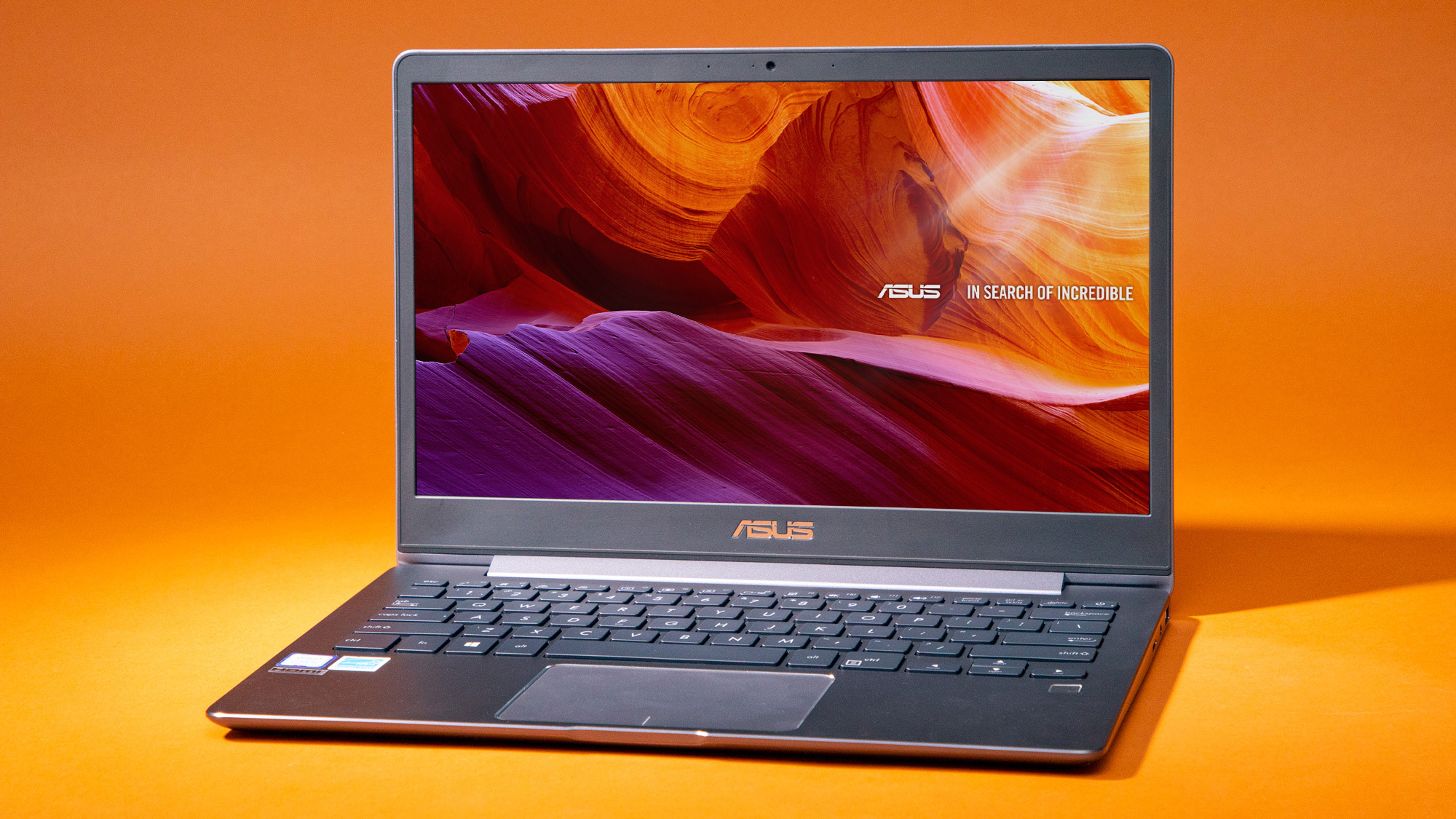
The Asus ZenBook 13 UX331UN is still the world’s thinnest 13.3-inch laptop with discrete graphics. And for a price ($999 at the time) significantly lower than the MacBook Air, the ZenBook 13 is a jaw dropper. It measures an unbelievably thin 12.2 x 8.5 x 0.5 inches and superlight 2.7 pounds, which blew us away.
“Until late 2017, engineering constraints in ultrathin laptop designs have resulted in compromised graphics performance, by dictating the use of integrated graphics with shared video memory,” an Asus representative said.
“Our engineer worked really hard on the placement [of the Nvidia GeForce MX150] to ensure we didn’t compromise on any feature or components. That is, with special designed and placed thermal system and fans as well as special placement of antenna and panel components, and tailor-shaped batteries, our team managed to house all [of the latest specs at the time] into one single 13.3 inch chassis.”
In our review, we were not only impressed by its footprint, but also its mesmerizing navy aluminum chassis with concentric circles surrounding the Asus logo. On top of its beautiful design and solid performance, the ZenBook 13 boasted over 9 hours of battery life, completing a full circle of hallmarks to make it as the best ultrabook of the decade. — Rami Tabari
Best chromebook: Asus Chromebook Flip C302
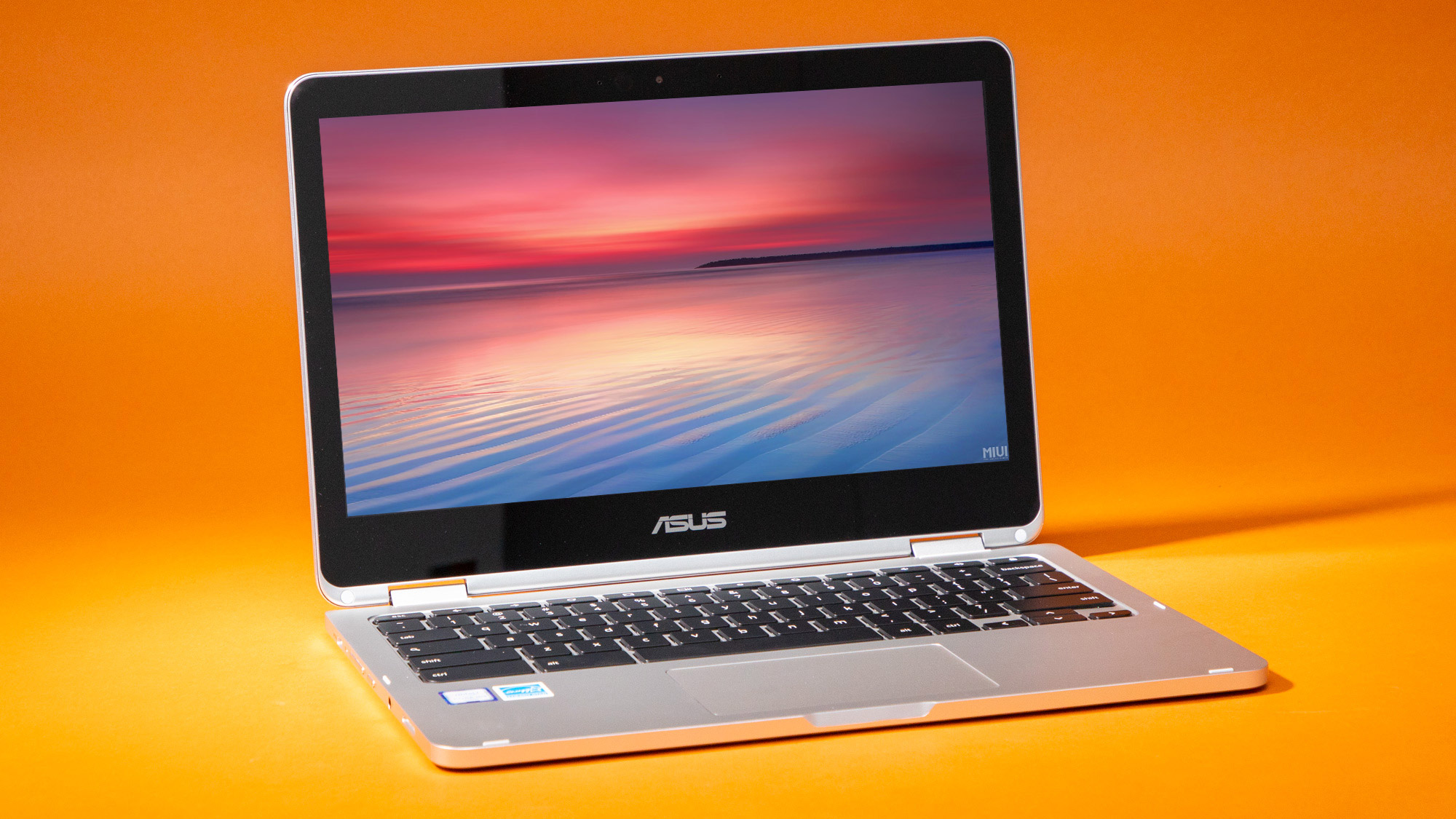
The Asus Chromebook Flip C302 was an amalgamation of all of the right things at the time, from being one of the first Chrome OS devices to support Android apps from the Google Play Store to utilizing a 2-in-1 design that takes advantage of those very same apps.
“Before 2017, [the] Chromebook was mainly considered as either a budget laptop for K-12 student or a second device [used] for only internet surfing. That is, most of the OEM designed their Chromebook line-up with small core CPU (Celeron/Pentium), and with plastic chassis design,” an Asus representative said.
“ASUS discovered another potential of Chromebook. Considering Google is bringing Chromebook Flip C302 was designed with durable metallic construction with 360° flappable display, full-size backlit keyboard, an extra-large touchpad; and moreover [an] Intel Core level processor and USB Type-C port.”
That switch from plastic to aluminum made the Chromebook Flip look and feel like a premium laptop. And thanks to Asus’ addition of an Intel Core processor, the Chromebook Flip C302 and speedy performance topped off with solid battery life and a bright 1080p display. Asus’ premium Chromebook package came in just under $500, which is why it’s our best Chromebook of the decade. — Rami Tabari
Best innovation: Lenovo Yoga 13
Up until 2012, there had been a lot of experimentation around tablet PCs (remember those?) and convertibles, but nothing really clicked with consumers. There were rotating displays, detachables and other form factors, but going from a PC to tablet mode and back again on all of these designs felt like work.
Enter the Lenovo Yoga 13, which was the first 2-in-1 laptop that made it super simple to switch modes. With its 360-degree display, you could easily flip from notebook to tablet mode but also engage tent mode or stand mode with very little effort.
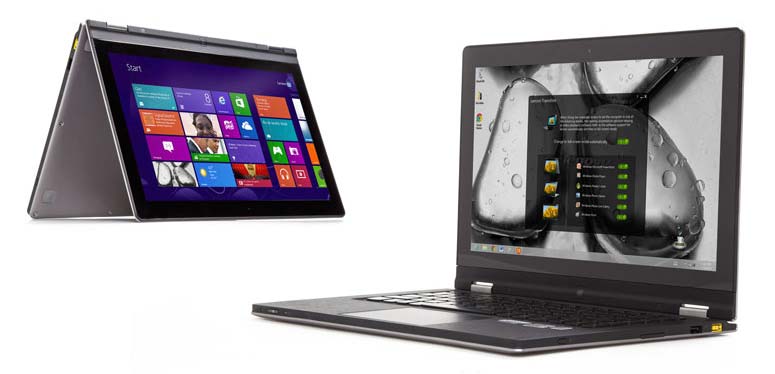
We called this convertible an “able contortionist” in our Yoga 13 review for a reason.
“This converting form factor of being able to fold back on itself was so simple and natural for users to experience. People didn’t want to deal with multiple pieces and parts,” said Matt Bereda, vice president of global marketing at Lenovo.
To execute this innovative design, Lenovo developed a double-hinge mechanism to offer seamless mode switching but also rock-solid stability so that the display didn’t wobble or fall back when users touched the screen.
On the software front, the Yoga 13 was smart enough to disable the keyboard when you switched into tablet mode or stand mode.
Once consumers got their hands on this 2-in-1 laptop, they really liked it, and sales exceeded Lenovo’s expectations right out of the gate.
The reception was much stronger than we expected,” said Bereda. “Gen 1 and Gen 2 sales really exploded for us, and it really propelled Lenovo to the forefront of the convertible category.”
Inspired by the Yoga 13’s success, Lenovo continued to innovate through the decade, debuting an elegant watchband hinge on the Yoga 3 Pro in 2014, a radically different dual-display convertible in the Yoga Book in 2016 and a single-barrel soundbar hinge on the Yoga C930 in 2018.
At the same time, Lenovo has expanded the Yoga lineup to include everything from tablets with built-in stands to all-in-one PCs with tilting displays and wireless charging docks. There are even Yoga laptops that don’t flip around, which would seem to contradict the Yoga branding.
But to Lenovo, Yoga is now about creating devices that conform to your needs and not just hardware gymnastics. The Yoga S940, for example, has AI that can do everything form optimize battery life based on how you use the system to blur out the background when making video calls.
“Yoga at one point was just a convertible, and we’ve really stretched it to stand for devices that adapt to you across a lot of different experiences,” said Bereda.
While Lenovo won’t provide a timeline, don’t be surprised when the company stretches the Yoga brand even further to foldable-screen PCs in the coming years. — Mark Spoonauer
Best gaming innovation: Alienware Area-51m
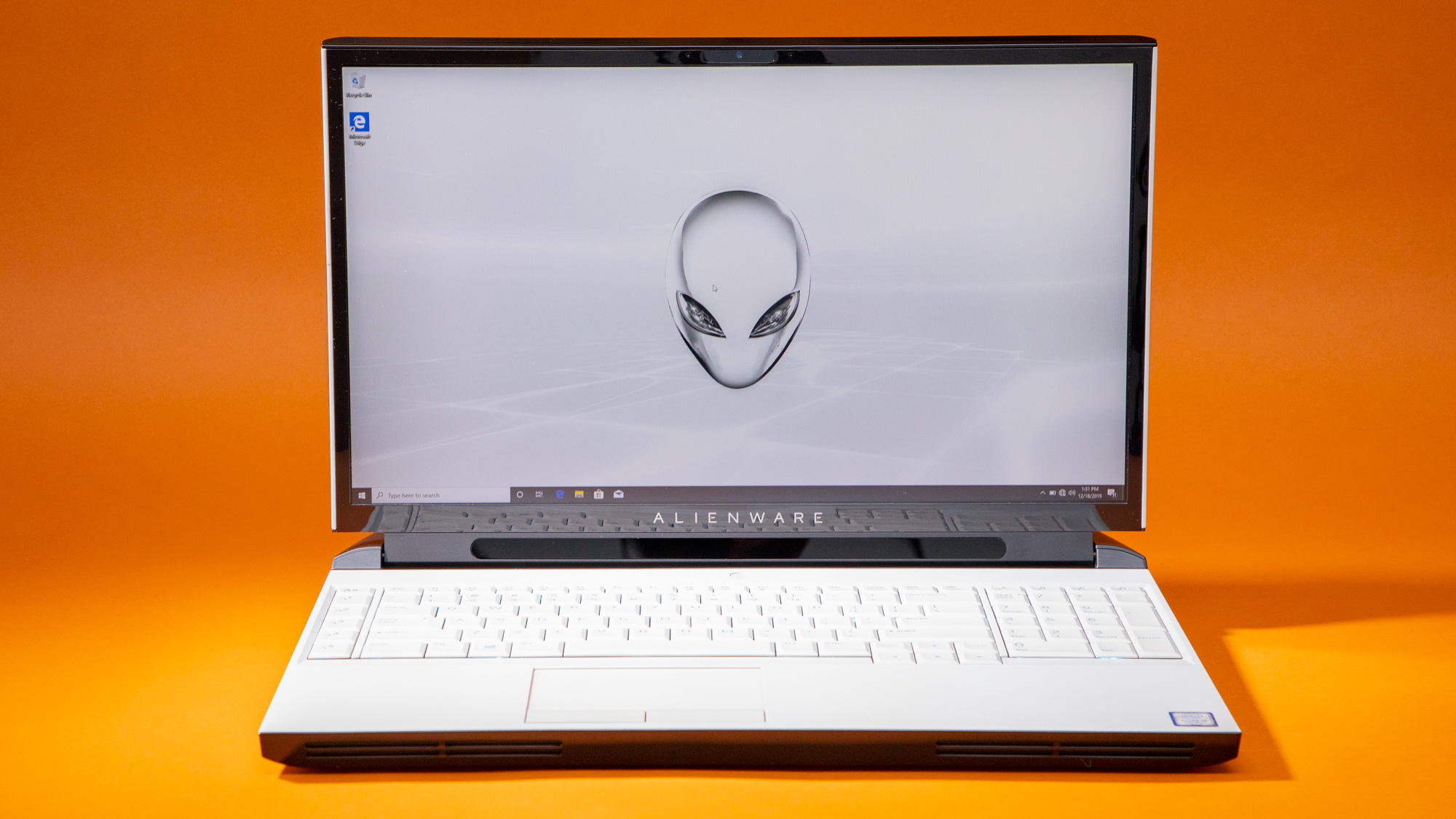
The king of gaming laptops, aka the Alienware Area-51m, sprung into life just at the end of the decade and was the mark of a whole new design language for Alienware as well as a mark for a whole new level of gaming performance that we haven’t really seen. It was the first in a long time that a gaming laptop was able to be fully upgradable, from the CPU and GPU to the RAM and storage.
“The only way we survive is if we continue to innovate; being the leaders of the gaming industry requires us to make sure that we’re always leading,” Alienware global product marketing manager Eddy Goyanes said. “Dell’s advanced engineering team had to come up with a whole mechanical means to get [GPU upgradability] [...] because MXM isn’t getting very much support anymore [...] so they called [what the engineering team created] the Dell graphics former factor (DGFF), [which is] an upgradable socket that no one else has.”
The Alienware Area-51m’s Legend ID brought the Alienware out of its edgy teenage years and into its elegant adult years. Once again, Alienware has the best looking gaming laptops of all time. Combo that with an insanely powerful desktop-level CPU and an upgradable GPU, the Area-51m lands itself as the most innovative gaming laptop of the decade. — Rami Tabari
Best design: HP Spectre x360

HP's latest Spectre x360 13 is the best convertible laptop around but that device wouldn't exist today if not for the success of the original Spectre x360.
Convertible laptops weren't new at the time, but the first Spectre x360 helped put HP on the map next to the likes of Lenovo's Yoga laptops. The Spectre x360's gorgeous ultraslim aluminum stood out from the competition in the same way as HP's stunning Spectre 13. But what made the convertible model such a compelling device is that it proved beauty didn't need to interfere with usability.
"We started with these principles. Number one was: let's have a design that is the world's best laptop but could also be a 360 without being compromised, and we looked at key features like battery life," Mike Nash, chief technologist and VP of customer experience and portfolio strategy for personal systems at HP, told Laptop Mag.
HP struck that sweet spot with the Spectre x360, which was portable enough to travel with yet offered all-day battery life.
"There was a lot of pressure to get the device to less than 3 pounds," Nash said. "The problem was, if it's less than 3 pounds, it wouldn't have had that battery life. I struggled with 'Do we go a little over 3 pounds in order to have the battery life or do we go over 3 pounds and they complain about the weight?' So we handed laptops to people...Customers couldn't tell between 3 pounds and 3.26 pounds. Laptops have become much lighter, but at that time, that tradeoff was super important." — Phillip Tracy
Sign up to receive The Snapshot, a free special dispatch from Laptop Mag, in your inbox.

Sherri L. Smith has been cranking out product reviews for Laptopmag.com since 2011. In that time, she's reviewed more than her share of laptops, tablets, smartphones and everything in between. The resident gamer and audio junkie, Sherri was previously a managing editor for Black Web 2.0 and contributed to BET.Com and Popgadget.
- Mark SpoonauerEditor-in-Chief
- Henry T. Casey
- Phillip Tracy
- Rami TabariReviews Editor
